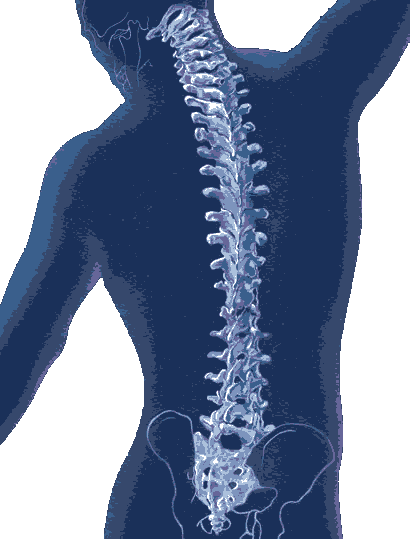Abraham Lincoln The Legacy of an Initiate
Abraham Lincoln was the only president of the United States to have risen to Initiate status in the Brotherhoods, and, as such, he was in fact a saint occupying the highest office of our land. The ancient Brotherhoods of scientist-philosophers were instrumental in establishing the United States, and they were concerned with its preservation in the face of the mounting effort by the English Crown to undermine America and regain rule over the colonies it lost by the American Revolution. By having one of their own members (Lincoln) in a position to combat the forces of dissolution, the Brotherhoods were able to get our nation back on track. Their efforts at establishing effective economic policies via Lincoln served the U.S. well for at least eight decades, but the same foreign enemy that subtly works against U.S. sovereignty continues to this day.
The Buchanan administration which Lincoln succeeded in March 1861 was entirely treasonous. By 1860, these anti-North radicals operated directly from the White House, led by former Attorney General Caleb Cushing, a lawyer for the Borlin Opium Cartel. This administration was wholly devoted to the interests of slavery, and set them boldly at war to weaken the North and strengthen the South. They transferred most of the weapons of war from the North, where they were manufactured, to the South, where they could readily be seized. They plunged the nation into a heavy debt in time of peace. When the Treasury was bare of cash, they robbed it of millions in bonds and whatever else they could get their hands on. They fastened onto an incipient free-trade system which impaired revenues, paralyzed national industry, and compelled exportation of immense production of gold. The Navy was reduced to an unserviceable condition, dispersed to the farthest oceans. The little Army was on the Pacific Coast, sequestered in Utah, or defending the Southern States from our Indians. Both Howell Cobb, secretary of the treasury, and vice President John C. Breckinridge were Sovereign Grand Inspector Generals and active members of the Scottish Rite, which was directed by its counterpart in England. These Freemasonic traitors had been working actively for months to disarm the northern federal arsenals and equip the southern rebel states. Citizens demonstrated throughout northern cities, as tons of military hardware were stolen and shipped south for a Confederacy attack against the United States.
The situation facing Lincoln upon inauguration was the worst the United States had ever faced. The British had financed and installed a series of traitorous presidents who had all but dismantled the U.S. economy. Tyler, Polk, Pierce and Buchanan had destroyed the basic institutions of the U.S. economy, moving control into the hands of British financiers working through banking houses of Boston and New York.
This led to a series of manipulated bank failures and depressions. In 1857, the U.S. economy went bust. Business came to a standstill. Hunger was widespread. The Treasury was bankrupt and Congress had not been paid. Even before Lincoln was inaugurated, an assassination plot in Baltimore was uncovered requiring the president to be hidden on a train which secretly brought him to Washington. Upon his arrival, as he was preparing to assume office, the armed Knights of the Golden Circle were preparing to kill the new president and seize the capital. General Winfield Scott, commander of the U.S. military, had moved the headquarters of the U.S. Army out of Washington, D.C. when the traitorous Franklin Pierce had been elected in 1852. Scott deployed thousands of troops, bomb experts, and special police to every conceivable vantage point against a likely assassin. Earlier, Scott had prevented secessionists from disrupting the counting of the electoral ballots in Washington.
As I would not be a slave,
so I would not be a master.
This expresses my idea of democracy-
Whatever differs from this,
to the extent of the difference,
is no democracy.
Abraham Lincoln (a private meditation)
This was far more than a fight between North and South–between slave states and Free states. What was literally at stake was the continued existence of the only nation in the world that had successfully defeated (even if partially) the British system of free trade and established a republic based on natural law and American System economics. For this, the British Crown had never forgiven the Americans and became increasingly embittered toward the young republic.
There had been a 3-year plot by the British-backed and British-inspired Scottish Rite Freemasons to dismantle the American System and replace it with the British system of slavery and free trade. Lincoln was to determine the future possibility of any successful opposition to the British system anywhere in the world. Not only was the new president faced with bankruptcy, secession and the British-backed intrigue, but upon inauguration he met with unabashed treason from within his own cabinet. However, Lincoln acted as he was never expected to act. He immediately called for 75,000 volunteers to put down the attempted coup d’état. For the next four years, Lincoln invoked the full powers of the presidency. The Civil War created the emergency conditions for President Lincoln and his Whig advisers to carry out the most sweeping reorganization of the economy on the basis of American System principles since the founding of the country.
Allow me now, in my own way, to state with what aims and objects I did enter upon this campaign. I claim no extraordinary exemption from personal ambition. That I like preferment as well as the average of men may be admitted. But I protest I have not entered upon this hard contest solely, or even chiefly, for a mere personal object. I clearly see, as I think, a powerful plot to make slavery universal and perpetual in this nation. The effort to carry that plot through will be persistent and long continued, extending far beyond the senatorial term for which Judge Douglas and I are just now struggling. I enter upon the contest to contribute my humble and temporary mite in opposition to that effort.
Abraham Lincoln (“Notes for Speeches,” August 21, 1858)
The fact that Lincoln faced treason, insurrection, and bankruptcy within the first days of taking office, and yet within four years not only smashed the British-run insurrection, but created the greatest industrial giant the world had ever seen, is the clearest testimony to the success of the American System of Political Economy. While fighting a war in which he led an army that had over the course of the war 3 million men at arms (out of a total Northern population of 22 million), and in which more than half a million men died,
President Abraham Lincoln:
Organized a militia on a uniform basis;
· Built and equipped the largest army in the world;
· Reorganized the judicial system;
· Launched the steel industry;
· Created a continental railroad system;
· Institutionalized scientific agriculture, by methods including the Homestead Act, which provided free western lands for farmers, the establishment of the Department of Agriculture, and government promotion of a new era of farm machinery and cheap tools;
· Established a system of free higher education throughout the U.S.–the Land Grant College System;
· Pursued a policy of massive immigration to increase the population as quickly as possible;
· Provided major government support to all branches of science, through the U.S. Coast Survey and the National Academy of Sciences;
· Organized the Bureau of Mines;
· Organized governments in the Western territories;
· Abolished slavery, freeing 4 million slaves.
The breathtaking economic development program which Lincoln designed not only saved the nation and won the war, but remained in effect long enough after his assassination for the United States to become the world’s greatest industrial power.
The American System
Lincoln’s American System economic program:
· Created a national banking system free from interest payments;
· Reestablished national control over banking, with cheap credit directed for productive purposes;
· Created a national currency for the first time in nearly 25 years (the greenback-$450 million worth);
· Increased government spending by 600 percent (to $300 million per year);
· Implemented the highest protective tariff in U.S. history (the Morrill Tariff) to protect labor and US. industry;
· Promoted standardization and mass production nationwide; and
· Increased labor productivity by 50-75 percent
Lincoln’s entire life was dedicated to the American System of the Founding Fathers. Via the Civil War, Lincoln defeated the British System of slavery and free trade and restored the American System�”the primary object of the men who made the American Revolution.”
The battle between British free trade and the American System was clear in the 1832 presidential contest between Andrew Jackson and Henry Clay. This was the year Lincoln made his first bid for public office to the State Legislature of Illinois. When Andrew Jackson became president, he greatly damaged the U.S. economy by failing to establish a national bank after refusing to recharter a central bank owned by bankers that had been creating fiat money. But not having a national bank owned and supervised by the government meant that the country had no national currency. There was no funding for internal improvements, any direction of credit. Private Banks were completely unregulated and began to charge exorbitant interest rates. Any hope that Clay and the Whigs had for industrializing the South, as the way to end slavery and avoid civil war, were dashed.
Let us hope, rather, that by the best cultivation of the physical world, beneath and around us; and the intellectual and moral world within us, we shall secure an individual, social, and political prosperity and happiness, whose course shall be onward and upward, and which, while the earth endures, shall not pass away.
Abraham Lincoln (Milwaukee, WI. Sept. 1859)
When Jackson failed to establish a National Bank, he also stopped federal support for road, canal, and railway construction, putting the brakes on pioneer settlement of the West: But American Whigs fought to continue the internal improvements. Lincoln led this fight from the age of 24 as a state legislator in Illinois. As the leader of the famous group of Whig legislators from Sangamon County, the “Long Nine” (so called because all were over six feet tall); he sought to turn the mud-and-ice-bound Midwest into the new industrial center of the continent, beginning with the construction of railways and canals to crisscross Illinois. The “Illinois Improvement Program,” or as it came to be known simply as Lincoln called it, “The System,” centered on two major projects: Construction of the Illinois-Michigan canal and a 3,000-mile railroad system. This “grand design” of the republican faction would complete an unbroken water transportation line from the Hudson River via the recently completed Erie Canal to the Great Lakes and into the Mississippi River.
Neither let us be slandered from our duty by false accusations against us, nor frightened from it by menaces of destruction to the Government nor of dungeons to ourselves. Let us have faith that right makes might, and in that faith, let us, to the end dare to do our duty as we understand it.
Abraham Lincoln (Cooper Institute Speech, February 27, 1860)
The growth of manufacturing in Illinois was the most rapid and remarkable in the industrial history of the U.S. In 1835, Chicago exploded to nearly 30,000 people and was shipping out 2 million bushels of wheat a year! By 1855, 175,000 people were living in the northern part of the state.
In 1836, Lincoln made internal improvements the major issue of his re-election campaign. In 1837, with Lincoln at the forefront of the state’s fight, $10 million was passed as the Omnibus Bill for two railroads to crisscross the state. As Whig leader of the House, Lincoln wrote most of the internal improvement legislation. He supported the establishment of a state bank, but only because of the lack of a National Bank.
By 1858, Lincoln was a powerful spokesman against slavery, both for its inhumanity and for its undermining of all laborers other than the slaves. To understand the quality of leadership represented by Abraham Lincoln, here are parts of two of his most powerful speeches:
“The representatives in old Independence Hall said to the whole race of men: ‘We hold these truths to be self-evident: that all men are created equal; that they are endowed by their Creator with certain inalienable rights; that among them are life, liberty, and the pursuit of happiness.’ This was their majestic interpretation of the economy of the universe. This was their lofty, and wise, and noble understanding of the justice of the Creator to his creatures. Yes, gentlemen, to all his creatures; to the whole great family of men. In their enlightened belief, nothing stamped with the divine image and likeness was sent into the world to be trodden on and degraded and imbruted by its fellows. They grasped not only the whole race of men, then living, but they reached forward and seized upon the farthest posterity. They erected a beacon to guide their children and their children’s children, and the countless myriads that should inhabit the earth in other ages. Wise statesmen as they were, they knew the tendency of prosperity to breed tyrants, and so they established these great self-evident truths, that when, in the distant future, some man, some faction, some interest, should set up the doctrine that none but rich men, none but white men, or none but Anglo-Saxon white men were entitled to life, liberty and the pursuit of happiness, their posterity might look up again to the Declaration of Independence and take courage to renew the battle which their fathers began, so that truth and justice and mercy and all the humane and Christian Virtues might not be extinguished from the land; so that no man hereafter would dare to limit and circumscribe the great principles on which the Temple of Liberty was being built.”
A second speech during the 1858 campaign makes clear the universal principle involved in Lincoln’s opposition to slavery:
“That is the issue that will continue in this country when these poor tongues of Judge Douglas and me shall be silent. It is the eternal struggle between these two principles, right and wrong, throughout the world. They are two principles that have stood face to face from the beginning of time; and will ever continue to struggle. The one is the common right of humanity and the other the “divine” right of kings. It is the same principle in whatever shape it develops itself. It is the same spirit that says, ‘You work and toil and earn bread and I’ll eat it.’ No matter in what shape it comes, whether from the mouth of a king who seeks to bestride the people of his own nation and live by the fruit of their labor, or from one race of men as an apology for enslaving another race, it is the same tyrannical principle.”
Lincoln, as president, had to wage war on two fronts–one against the free traders of New York and New England, and the other against their surrogates, the Confederate Army. Both were run out of London. He made a fundamental turning point in U.S. history by restoration of the American System and defeating the British plan to balkanize and forever destroys the United States through its support of the Confederacy.
There is no doubt that President Lincoln’s efforts represented the greatest accomplishment in U.S. and possibly human history, in a four-year period of time. On the other hand, the British-allied northern bankers and their congressional spokesmen and the British government itself organized every possible opposition.
Frantic over the American System financial policy, the British began a massive organizing drive in support of free trade, especially when their earlier plans for military intervention on behalf of the Confederacy were blocked by the Russian Czar. John Stuart Mill and Chancellor of the Exchequer William Gladstone controlled the Cobden Club–Britain’s worldwide agitators for free trade. There was speculation on Wall Street to depreciate the greenbacks, the problem being the compromise that Lincoln and Congress had been forced to make of linking interest payments on the greenbacks to gold.
The Civil War, perhaps more than any other war in history, was a direct combat between the two fundamental opposing views of man and nature. The South was a feudal system, and British agents had always been in close alliance with the slave-holding aristocracy of the South. British free trade, the industrial monopoly then in England, and human slavery traveled together.
Abraham Lincoln, perhaps more than any American leader before or since, embodied from the highest standpoint the understanding of man made in the image of God. Due to the influence of the Brotherhood in which he was an Initiate, Lincoln’s commitment to the American System of economics and his freeing of four million slaves are totally coherent. As his contemporary, Henry Carey, pointed out again and again, there never was, and never would be, a system of British free trade that did not rest on human slavery–and no American System republic could exist were it based on the human bondage that stems from free trade’s lack of wage protection for a country’s laborers.”
The Adelphi Organization
 A New Drug Delivers “Fitness” Without the Workout
A New Drug Delivers “Fitness” Without the Workout

 Myofascial Pain in Athletes
Myofascial Pain in Athletes Women Age 30+ Modify Breast Cancer Risk With Exercise
Women Age 30+ Modify Breast Cancer Risk With Exercise Individuals Genetically At Risk Of Developing Psychological Disorders Also Benefit The Most From Positive Environments
Individuals Genetically At Risk Of Developing Psychological Disorders Also Benefit The Most From Positive Environments Survey Flushes Out The Secrets Of Americans’ Bathroom Habits
Survey Flushes Out The Secrets Of Americans’ Bathroom Habits Physician / Preventive Medicine Expert Explains How To Reverse Obesity And Diabetes Naturally
Physician / Preventive Medicine Expert Explains How To Reverse Obesity And Diabetes Naturally Healthcare Providers Demanding Greater Integration from Pharmacy Software Vendors.
Healthcare Providers Demanding Greater Integration from Pharmacy Software Vendors. Florida: Congressman Gus Bilirakis Introduces Sleep Apnea Awareness Bill to Congress
Florida: Congressman Gus Bilirakis Introduces Sleep Apnea Awareness Bill to Congress
 New vegetarian omega-3 from Echium seed oil offers fish oil benefits. In the wake of National Vegetarian week, nutrition scientist Dr Nina Bailey discusses a new vegetarian source of omega-3 fatty acids from echium seed oil, which converts to long-chain fatty acids up to 5 times more effectively than flaxseed.
New vegetarian omega-3 from Echium seed oil offers fish oil benefits. In the wake of National Vegetarian week, nutrition scientist Dr Nina Bailey discusses a new vegetarian source of omega-3 fatty acids from echium seed oil, which converts to long-chain fatty acids up to 5 times more effectively than flaxseed.